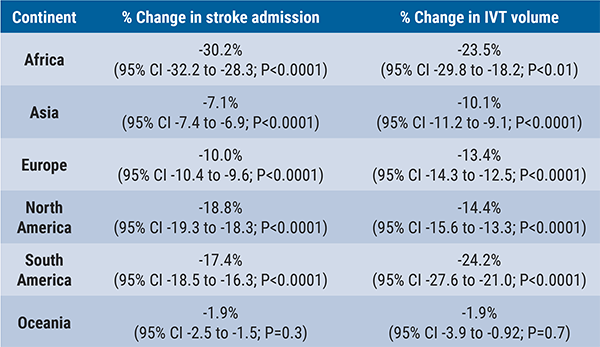"To our knowledge, this is the first study to demonstrate that telestroke is associated with a clinically meaningful reduction in mortality and improved use of reperfusion treatments with no increase in health care spending," the study team writes in JAMA Neurology.
Telestroke can extend stroke expertise to hospitals without on-site stroke expertise. In real-time, the remote stroke expert can interview and examine the patient, review brain imaging, determine candidacy for thrombolysis or thrombectomy, assess the need for transfer, and recommend other treatments, including secondary stroke prevention.
Telestroke is increasingly being adopted in hospital emergency departments, "but the evidence base to demonstrate that it has a positive benefit is relatively limited and there is some skepticism about whether telestroke is effective," Dr. Ateev Mehrotra of Harvard Medical School, in Boston, said in a journal podcast.
To investigate further, Dr. Mehrotra and colleagues matched more than 76,000 Medicare patients with acute ischemic stroke who first presented to hospitals with telestroke capacity to a like number of patients who presented to control hospitals without telestroke capacity.
They found that patients cared for at telestroke hospitals had higher rates of reperfusion treatment compared with those cared for at control hospitals (6.8% vs. 6.0%; P<0.001) and lower 30-day mortality rates (13.1% vs. 13.6%; P=0.003).
"Across more than 600 hospitals in the US, we found that telestroke capacity was associated with a 15% relative increase in receiving reperfusion treatment (thrombolysis with alteplase or thrombectomy) and reduced short-term mortality," the researchers report.
"Increases in reperfusion treatment at telestroke hospitals were largest among older patients and rural patients and were incrementally higher in each of the three years following telestroke implementation. We found sizable reperfusion differences in our comparison of low-volume hospitals, which suggests that telestroke had more impact in locations that treat fewer than two strokes per month," they say.
Of note, the benefits observed did not result in higher spending.
The summary points, said Dr. Mehrotra, are that "introduction of telestroke capacity at hospitals seems to be a good thing because it's improving mortality, increasing reperfusion and is not increasing spending, so we would call this a very cost-effective treatment."
In their article, the researchers write, "Given the increasing prevalence of telestroke in EDs and current state of evidence, it is unlikely that a randomized clinical trial of telestroke vs placebo is feasible given the ethics of not offering patients effective stroke care. Therefore, we believe this form of rigorous observational study is likely to be the best evidence available on the association of telestroke with treatment and outcomes for patients with acute ischemic stroke."
The study was supported by the National Institute of Neurological Disorders and Stroke.
SOURCE: https://bit.ly/2OlnSkv JAMA Neurology, online March 1, 2021.
By Megan Brooks
Posted on
Previous Article
« Dupilumab an option when other targeted agents fail in aspirin-exacerbated respiratory disease Next Article
Roche joins AstraZeneca in ditching U.S. bladder cancer indication for immunotherapies »
« Dupilumab an option when other targeted agents fail in aspirin-exacerbated respiratory disease Next Article
Roche joins AstraZeneca in ditching U.S. bladder cancer indication for immunotherapies »
Related Articles

June 16, 2021
Pandemic results in decreased global stroke care
© 2024 Medicom Medical Publishers. All rights reserved. Terms and Conditions | Privacy Policy
HEAD OFFICE
Laarderhoogtweg 25
1101 EB Amsterdam
The Netherlands
T: +31 85 4012 560
E: publishers@medicom-publishers.com

